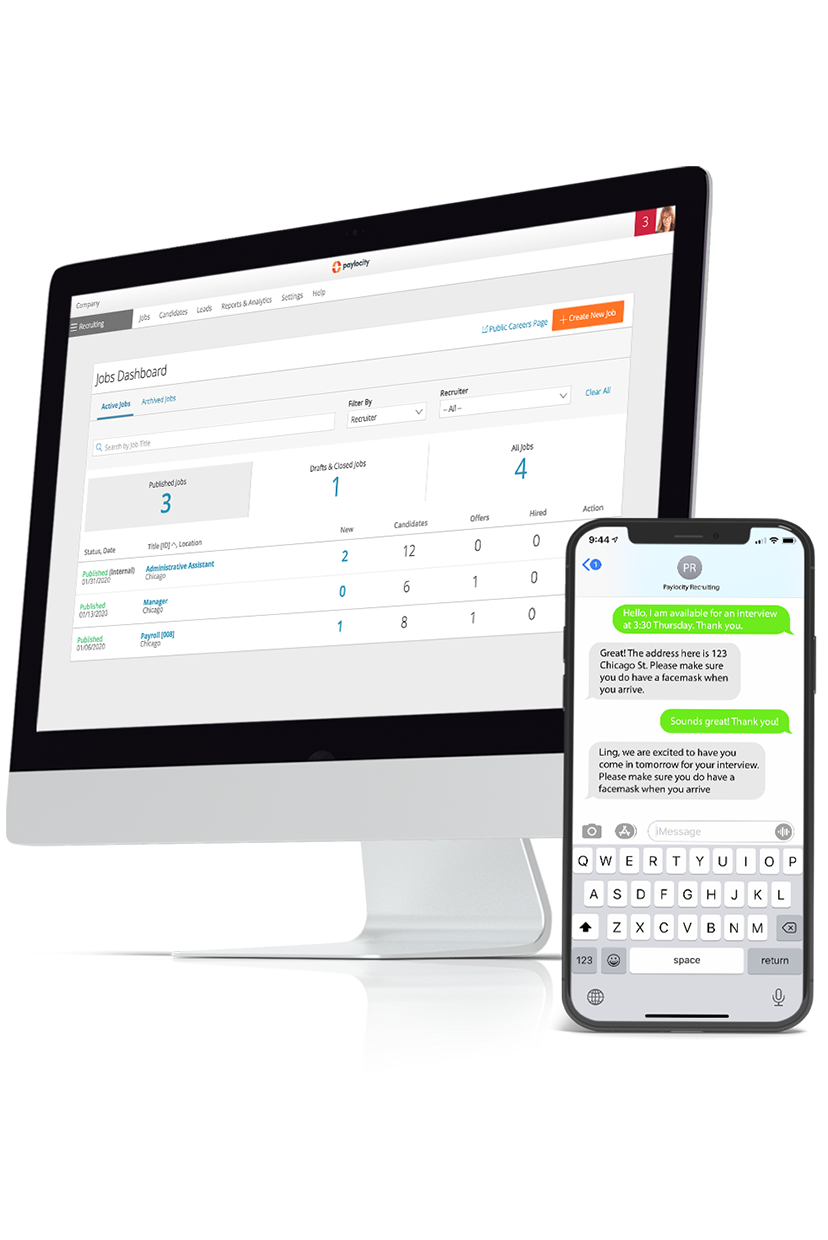If you’ve ever made a bad hire, you know it’s a decision that can haunt you — and impact the company’s bottom line.
With a lot riding on an interview, it’s imperative that recruiters and hiring managers get it right the first time. Whether virtual or not, interviewing is stressful for everyone involved, including candidates. But today, the odds are that you will make at least a few hires through your computer screen.
The good news is, we’ve learned a lot about virtual interview best practices, and with a little planning and coaching, all participants in the hiring process can make a great impression.
Why Are Virtual Interviews Important?
The competition for top talent puts pressure on employers to create a positive interview experience. Candidates today are not only evaluating the company and the job but also the process itself. In fact, 49% of job seekers say they have turned down an offer due to a poor hiring experience.
While the shift to virtual interviewing may not have initially happened by choice, when done well, it can often lead to higher quality candidates and more efficient recruiting processes.
The Benefits of a Virtual Interview
Although the pandemic accelerated remote work adoption and remote hiring, companies soon realized that virtual interviewing lets them tap into a much bigger and more diverse talent pool. In addition, employers say using virtual interviews speeds the hiring process and makes it easier to manage.
Automating the hiring workflow with an applicant tracking system further helps HR teams ensure each step is completed and communicated to every applicant. And of course, being able to interview your top candidates from a distance cuts down on travel time and expense.
Just as important, though, many candidates simply like the convenience of a virtual interview. It gives them more control over their physical environment, where they can speak with you from a position of comfort and confidence. A virtual interview also alleviates other candidate stressors such as dealing with traffic, parking, and finding the right office.
The Pitfalls of a Virtual Interview
Despite the advantages of a virtual job interview, it can be hard to recreate the intimacy of an in-person meeting when you are separated by miles and hardware. Not everyone is comfortable on camera, and candidates may struggle to maintain eye contact when your face is only inches away from their own.
There are different types of stressors for candidates during a virtual interview, not the least of which is the possibility of technical difficulties like a poor Internet connection or a faulty microphone. Keep in mind that candidates may not have a private home office, so you could meet a dog, a child, or a delivery person in the middle of the interview.
This glimpse into someone’s home can also invite unconscious bias. During the virtual interview, even something as seemingly innocuous as a sports team souvenir might trigger a deep-seated geographic rivalry — or an assumption about someone’s national origin. Recruiters and hiring managers often need training to help them recognize and prevent bias in a virtual setting.
While virtual interviews may not be ideal in every hiring situation, it’s safe to say they are here to stay. During the pandemic, 82% of employers used virtual interviews, with 93% planning to continue conducting interviews virtually in the future.



